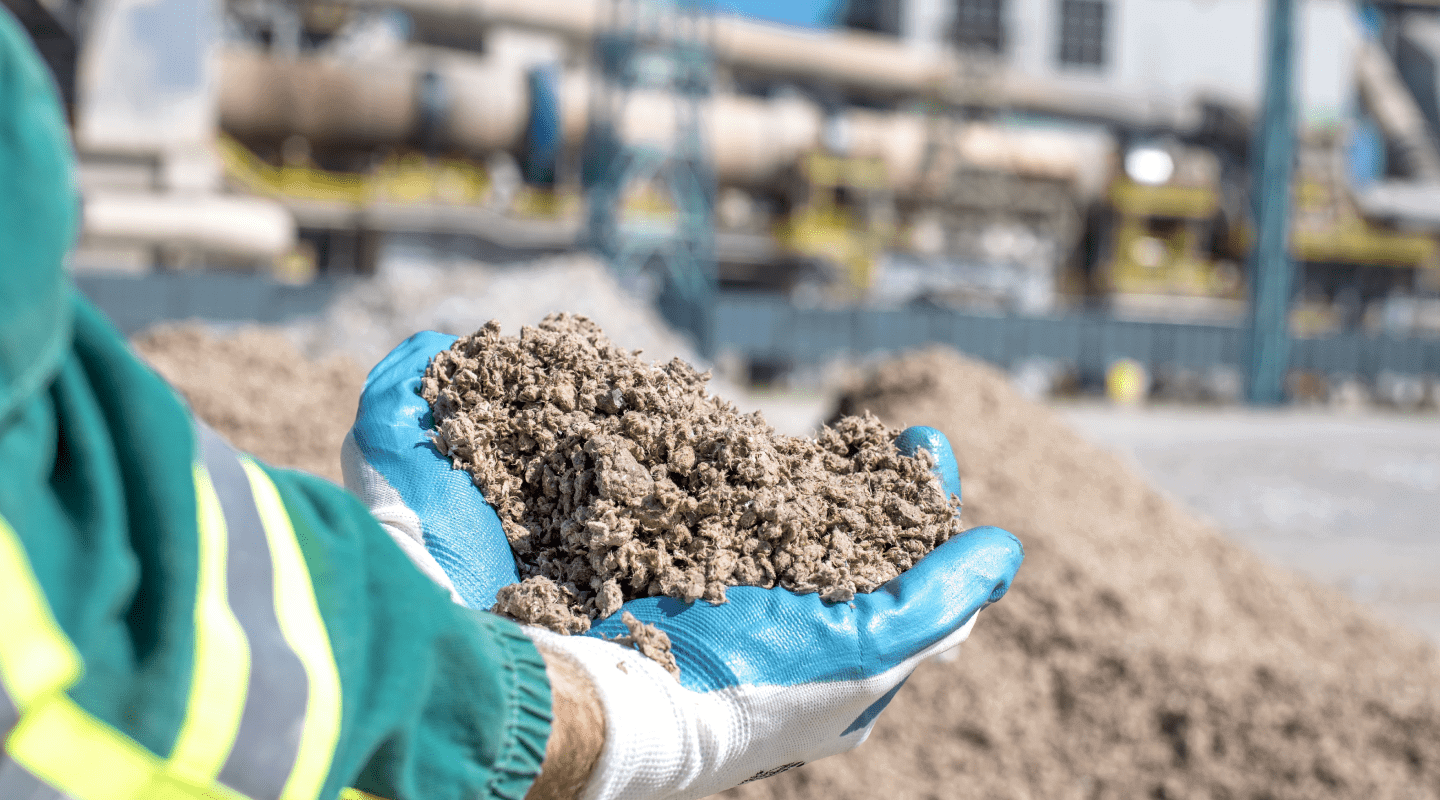A Symphony of Precision - Meticulously Engineered for Creation
Our plant is situated in the landscapes of Khonmoh, District Srinagar, Jammu & Kashmir. Powered by cutting-edge Rotary technology from M/s F.L. Smidth Limited, exemplifies our unwavering dedication to superior cement production. With a fusion of Danish engineering and captivating surroundings, Khyber Cement stands as a symbol of innovation. Experience the perfect blend of tradition and modernity, where architectural brilliance thrives amidst the heart of nature.
Limestone Extraction
The process begins with extracting limestone while continuously monitoring the drill holes and the blasted materials, frequently checking and segregating the raw material into two grades: High-Grade Limestone and Low-Grade Limestone. Subsequently, this meticulously extracted limestone is carefully loaded onto trucks or conveyors for its seamless journey toward the plant.
The process begins with extracting limestone while continuously monitoring the drill holes and the blasted materials, frequently checking and segregating the raw material into two grades:High-Grade Limestone and Low-Grade Limestone. Subsequently, this meticulously extracted limestone is carefully loaded onto trucks or conveyors for its seamless journey toward the plant.
Crushing and Mixing
Limestone is fed to the crusher with appropriate proportions of high-grade and low-grade limestone to achieve desired chemical composition. Daily product size checks and hourly quality control tests ensure accuracy. Material is stored in a 20,000MT capacity stockpile, aided by 28 vibro feeders for proper mixing. Other raw materials like clay, iron ore, coal, and gypsum undergo daily testing.
Limestone is fed to the crusher with appropriate proportions of high-grade and low-grade limestone to achieve desired chemical composition. Daily product size checks and hourly quality control tests ensure accuracy. Material is stored in a 20,000MT capacity stockpile, aided by 28 vibro feeders for proper mixing. Other raw materials like clay, iron ore, coal, and gypsum undergo daily testing.
Stringent Quality Check
The finely ground raw meal is carefully stored in a CF silo, where aeration fosters thorough mixing and homogenization. The homogenized raw meal is then extracted through 6 air slides, adhering to a precise sequence. We diligently monitor the sequence of extracted materials every week, collecting half-hourly samples manually from the air slide for comprehensive quality analysis.
The finely ground raw meal is carefully stored in a CF silo, where aeration fosters thorough mixing and homogenization. The homogenized raw meal is then extracted through 6 air slides, adhering to a precise sequence. We diligently monitor the sequence of extracted materials every week, collecting half-hourly samples manually from the air slide for comprehensive quality analysis.
Raw Mill Grinding
The crushed and ground limestone, along with the appropriate proportion of other raw materials (which are piled and tested in batches for quality confirmation), is fed into the raw mill through weigh feeders as per our raw mix design program to achieve the desired raw meal quality. Hourly samples are checked through an auto-sampler to ensure quality control. The accuracy of weigh-feeders is regularly checked as per the schedule and when required.
The crushed and ground limestone, along with the appropriate proportion of other raw materials (which are piled and tested in batches for quality confirmation), is fed into the raw mill through weigh feeders as per our raw mix design program to achieve the desired raw meal quality. Hourly samples are checked through an auto-sampler to ensure quality control. The accuracy of weigh-feeders is regularly checked as per the schedule and when required.
Fuel Mixing
The raw coal is meticulously ground in the coal mill, resulting in finely ground coal that is stored in two dedicated bins. To ensure quality, we extract a sample of fine coal during each shift to analyze its inherent IM (inorganic matter), and residue composition. The accuracy of weigh-feeders is regularly assessed as per the schedule and when needed, guaranteeing precise fuel measurements.
The raw coal is meticulously ground in the coal mill, resulting in finely ground coal that is stored in two dedicated bins. To ensure quality, we extract a sample of fine coal during each shift to analyze its inherent IM (inorganic matter), and residue composition. The accuracy of weigh-feeders is regularly assessed as per the schedule and when needed, guaranteeing precise fuel measurements.
Preheating and Pre-calcination
The combined raw materials undergo a meticulous process of preheating and pre-calcining in a specialized system, resulting in the removal of residual moisture and carbon dioxide. Strict monitoring is carried out to check and assess the degree of calcination in the 5th cyclone discharge.
The combined raw materials undergo a meticulous process of preheating and pre-calcining in a specialized system, resulting in the removal of residual moisture and carbon dioxide. Strict monitoring is carried out to check and assess the degree of calcination in the 5th cyclone discharge.
Clinker Production
The preheated and pre-calcined raw materials are carefully fed into a rotary kiln, where they undergo a series of chemical reactions and sintering to create clinker. Quality control measures include sampling clinker at the cooler discharge for hourly liter weight checks, as well as preserving samples for shift-wise comprehensive chemical analysis. The resulting clinker is subsequently stored in a dedicated silo.
The preheated and pre-calcined raw materials are carefully fed into a rotary kiln, where they undergo a series of chemical reactions and sintering to create clinker. Quality control measures include sampling clinker at the cooler discharge for hourly liter weight checks, as well as preserving samples for shift-wise comprehensive chemical analysis. The resulting clinker is subsequently stored in a dedicated silo.
Cement Grinding
Clinker, stored after grinding with gypsum in the HRP, is further ground in the cement mill. The final product is stored in a silo. Quality control includes sampling for setting time, fineness (Blaine value), and residue. We preserve samples for average testing as per IS 4031 & IS 4032. We regularly monitor the accuracy of weigh-feeders.
Clinker, stored after grinding with gypsum in the HRP, is further ground in the cement mill. The final product is stored in a silo. Quality control includes sampling for setting time, fineness (Blaine value), and residue. We preserve samples for average testing as per IS 4031 & IS 4032. We regularly monitor the accuracy of weigh-feeders.
Cement Packing
The stored cement is skillfully packed in bags using a roto packer, with precise measurements recorded by the packer section. Quality control diligently oversees the online printing to ensure compliance with BIS regulations, while also conducting hourly sample draws for the creation of average samples. These samples are then subjected to testing as per IS 4031 and IS 4032 standards.
The stored cement is skillfully packed in bags using a roto packer, with precise measurements recorded by the packer section. Quality control diligently oversees the online printing to ensure compliance with BIS regulations, while also conducting hourly sample draws for the creation of average samples. These samples are then subjected to testing as per IS 4031 and IS 4032 standards.
Technology
Our plant is manufactured by FLS, and it assists in resolving any problems that may occur or require upgrades.
Our plant is manufactured by FLS, and it assists in resolving any problems that may occur or require upgrades.
Quality Control
To achieve accurate quality control promptly, we utilize two XRF devices, specifically the Spectro IQ. We employ a flame photometer in quality control to check for minor components such as sodium and potassium. For standard curing of cubes, an automatic curing tank is available in our quality control department. We are a BIS Licensee, and following their guidelines, we meticulously maintain temperature, humidity, quality norms, and records.
To achieve accurate quality control promptly, we utilize two XRF devices, specifically the Spectro IQ. We employ a flame photometer in quality control to check for minor components such as sodium and potassium. For standard curing of cubes, an automatic curing tank is available in our quality control department. We are a BIS Licensee, and following their guidelines, we meticulously maintain temperature, humidity, quality norms, and records.


